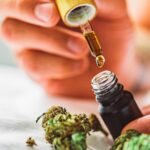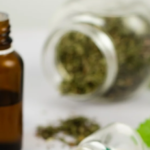
How to Find High-Quality CBD Oil in Canada: Tips for Smart Buyers
With the increasing popularity of CBD oil in Canada, it’s no surprise that more and more people are turning to this natural remedy for a range of ailments. However, with so many options flooding the market, it can be challenging to know which CBD oil is of the highest quality. To make sure you’re getting the best value for your money, here are some tips that will guide you toward purchasing the highest-quality CBD oil in Canada.
1. Look for Canadian-grown hemp
The quality of the CBD oil you purchase starts with the source of the hemp used to make it. In Canada, hemp is grown under stringent regulations that ensure the plant is free from harmful chemicals and pesticides.
- Why it matters: When you buy CBD oil, you’re essentially buying a product derived from hemp, which absorbs everything from the soil in which it’s grown. Hemp plants in Canada are typically free from contaminants, as they are regulated by government standards.
- Tip: Choose CBD oils made from Canadian-grown hemp, as they are more likely to meet high safety and quality standards. This gives you confidence that the oil is pure and free from harmful substances that could affect your health. Looking to buy high-quality CBD oil in Canada? Be sure to check the sourcing and certifications of the products you choose.
2. Check for Third-Party Lab Testing
One of the best ways to ensure you’re buying high-quality CBD oil is to look for third-party lab testing. A credible and transparent brand will offer lab reports for their products, which show exactly what’s inside the bottle.
- What to look for: Third-party lab tests measure the CBD concentration, THC levels, and the presence of contaminants like heavy metals, solvents, and pesticides. Reliable brands will provide access to these lab results, so you can verify the purity and potency of the CBD oil.
- Pro Tip: Always check if the product has been tested for these contaminants. If a brand doesn’t share lab reports or is vague about testing, it may be best to look elsewhere.
3. Understand the Different Types of CBD
When it comes to CBD oil, there’s no one-size-fits-all solution. Depending on your specific needs, it’s essential to understand the different types of CBD products available:
- Full-Spectrum CBD: Contains all cannabinoids, terpenes, and compounds naturally found in the hemp plant, including trace amounts of THC (below 0.3%). This variety offers an “entourage effect,” where all the components work together synergistically to maximize the health benefits.
- Broad-Spectrum CBD: Includes multiple cannabinoids and terpenes but contains no THC. It’s ideal for those who want the benefits of the hemp plant but wish to avoid THC.
- CBD Isolate: Contains only pure CBD, with no other cannabinoids or terpenes. This option is ideal for people who want a more targeted effect from CBD, without any traces of THC or other compounds.
- Tip: Consider your goals when choosing the type of CBD oil. If you’re new to CBD, you might want to start with broad-spectrum CBD or isolate to avoid THC. If you’re seeking an enhanced therapeutic effect, full-spectrum CBD could be a great choice.
4. Look for Clear and Accurate Labeling
Transparency is one of the key indicators of a high-quality CBD brand. Always check the label for the following information:
- CBD concentration: Ensure that the label clearly states how much CBD is in each serving. This information will help you determine how much CBD you’re consuming and whether it’s in line with your wellness goals.
- Ingredients list: The ingredients should be natural, with no harmful additives or fillers. Organic carrier oils like coconut oil, olive oil, or hemp seed oil are common in high-quality CBD oils.
- Dosage recommendations: Look for clear dosage instructions so you can determine how much CBD to take. Starting with the recommended dose and adjusting based on your experience is a good practice.
5. Consider the Extraction Method
The method used to extract CBD from hemp plays a significant role in the final product’s purity and potency.
- CO2 Extraction: This is the safest and most effective method for extracting CBD. It uses pressurized carbon dioxide to pull CBD and other beneficial compounds from the hemp plant, ensuring a high-quality product free from solvents and contaminants.
- Solvent Extraction: While common, this method can leave residual solvents in the product, which can be harmful to your health. Avoid CBD oils extracted using solvents, as they may compromise the product’s safety.
- Tip: Look for brands that use CO2 extraction, as it’s the gold standard for high-quality CBD oil. It’s cleaner, safer, and ensures that the oil retains its full potency and therapeutic benefits.
6. Research the Brand’s Reputation
Before making a purchase, it’s crucial to check the reputation of the brand you’re buying from. Trustworthy brands will be transparent about their sourcing, manufacturing processes, and product testing.
- What to look for:
- Customer reviews and testimonials on the brand’s website or third-party review platforms. Positive reviews from real customers are a good indication of the product’s effectiveness.
- Certifications and industry affiliations that show the brand is committed to quality standards.
- The brand’s commitment to sustainability and ethical business practices.
- Pro Tip: Always do your research on the brand. A reputable brand with a track record of positive feedback is more likely to offer high-quality products.
7. Start with a Lower Concentration
If you are new to CBD, it’s always a good idea to start with a lower concentration to gauge how your body responds to it. You can gradually increase the dosage as needed.
- Why it’s important: Starting with a low dose and adjusting allows you to better understand your body’s tolerance and needs. This also minimizes the risk of any adverse reactions.
- Tip: Many CBD oils come in various concentrations, so you can easily find a product that suits your personal needs and experience level. Start small and gradually increase your dosage as you feel comfortable.
8. Price vs. Quality: Don’t Fall for Cheap CBD
While it may be tempting to purchase the cheapest option, price should not be the sole factor when selecting CBD oil. High-quality CBD products are more expensive due to the costs associated with proper extraction, testing, and sourcing.
- What to avoid: Extremely cheap CBD oils often contain subpar ingredients, ineffective extraction methods, and lack third-party testing. These products may not deliver the therapeutic effects you’re looking for and could even be harmful.
- Tip: Don’t let price drive your purchasing decision. Opt for products from reputable brands that provide transparency about their sourcing, testing, and manufacturing processes.
9. Know the Legal Regulations in Canada
In Canada, the sale of CBD products is regulated under the Cannabis Act. It’s essential to ensure that the CBD oil you purchase is compliant with these legal standards.
- What to check: Verify that the product is from a licensed and legal source in Canada, ensuring it meets the necessary safety and quality standards.
- Tip: Look for products that are licensed by Health Canada or authorized for sale in the country. This guarantees that the product has been properly tested and meets the required standards.
Conclusion
Buying high-quality CBD oil in Canada can be a daunting task, but with the right knowledge, you can make an informed and smart decision. By considering the source of the hemp, checking for third-party lab testing, understanding the different types of CBD, and doing thorough research on the brand’s reputation, you’ll be well on your way to purchasing CBD oil that meets your health and wellness needs.
Remember, quality matters when it comes to CBD, and it’s worth investing in a product that is safe, effective, and transparent. By following these tips, you’ll ensure that you’re making a wise purchase and getting the most out of your CBD experience.





